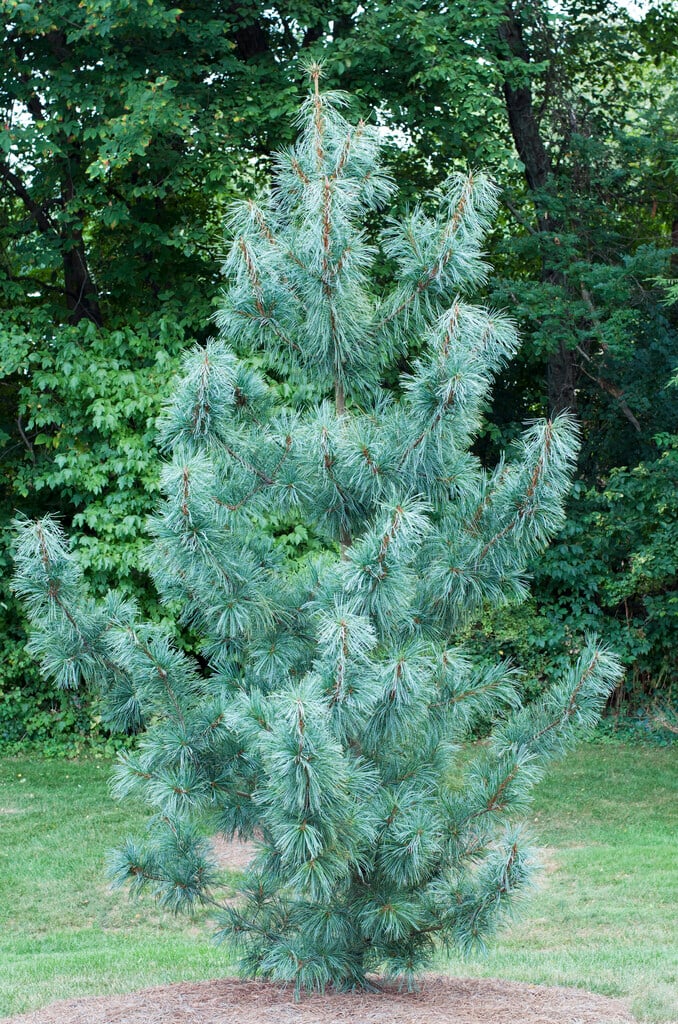Pinus koraiensis
Korean pine
An evergreen coniferous tree, capable of reaching 30m (100ft) high with a trunk 1.5m (5ft) in diameter, when mature. The bark is smooth and grey-brown becoming grey-black and peeling in patches over time. The tree forms a broadly conical canopy, with the needles produced in groups of five at the tips of short stems. The needles are approximately 13cm (5in) long and triangular in cross section, being dark green on the outer face and whitish green on the two inner faces. The cones appear in groups of up to 5 and are oval to cylindrical in shape and brown in colour when mature. The cones of this species are one of the main sources of pine nuts which are harvested for commercial use.

Buy this plant
Size
Ultimate height
Higher than 12 metresTime to ultimate height
20–50 yearsUltimate spread
Wider than 8 metresGrowing conditions
Moisture
Well–drainedpH
Acid, NeutralColour & scent
| Stem | Flower | Foliage | Fruit | |
| Spring | Green White | Brown | ||
|---|---|---|---|---|
| Summer | Green White | Brown | ||
| Autumn | Green White | Brown | ||
| Winter | Green White | Brown |
Position
- Full sun
Aspect
South–facing or West–facing
Exposure
Exposed or ShelteredDrought resistance
Yes Hardiness
H7Botanical details
- Family
- Pinaceae
- Native to GB / Ireland
- No
- Foliage
- Evergreen
- Habit
- Columnar upright
- Genus
Pinus can be shrubs or large, evergreen trees, some species with attractive bark, developing an irregular outline with age and bearing long needle-like leaves in bundles of 2, 3 or 5; conspicuous cones may fall or remain on the tree for years
- Name status
Correct
- Plant range
- E Asia
How to grow
Cultivation
Grow in well-drained, preferably neutral to acidic soil in full sun
Propagation
Propagate by seed, by semi-ripe cuttings, by hardwood cuttings, or by grafting, see: trees and shrubs from seed
Suggested planting locations and garden types
- Architectural
- Cottage and informal garden
- Low Maintenance
Pruning
No pruning required
Pests
May be susceptible to adelgids, conifer aphid, sawfly larvae, and pine shoot moth
Diseases
May be susceptible to honey fungus and needle cast diseases
Get involved
The Royal Horticultural Society is the UK’s leading gardening charity. We aim to enrich everyone’s life through plants, and make the UK a greener and more beautiful place.